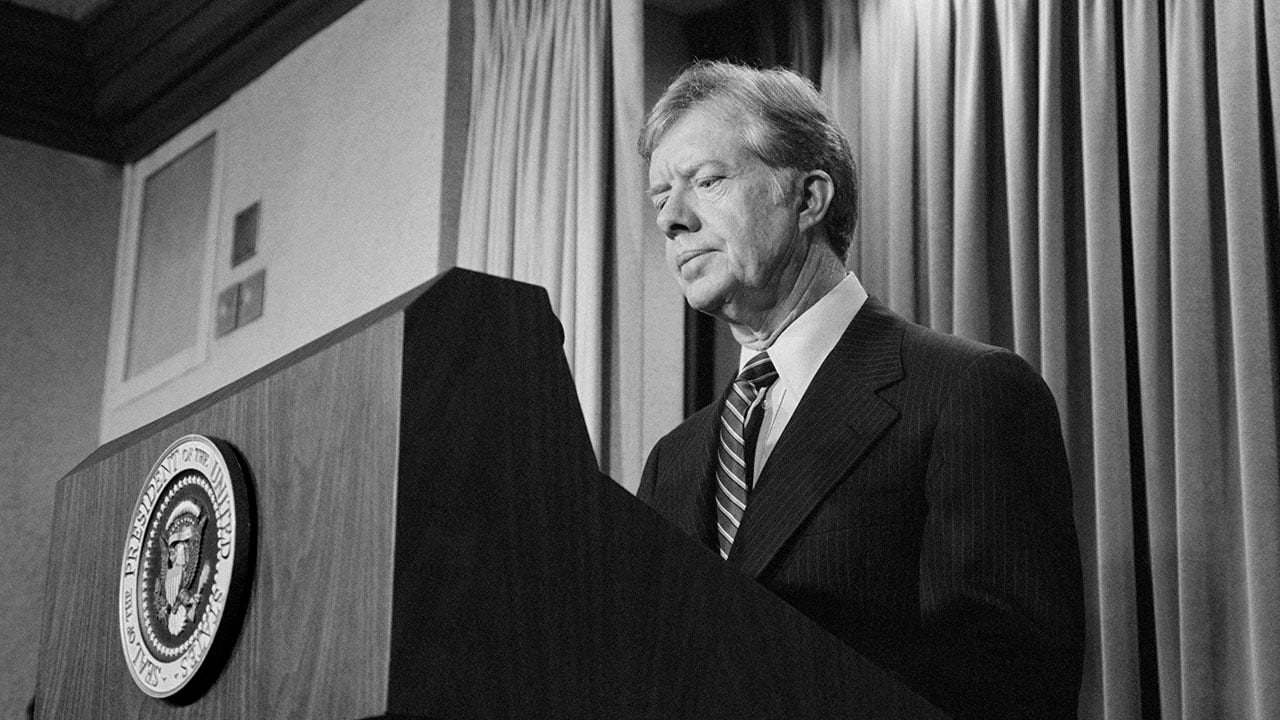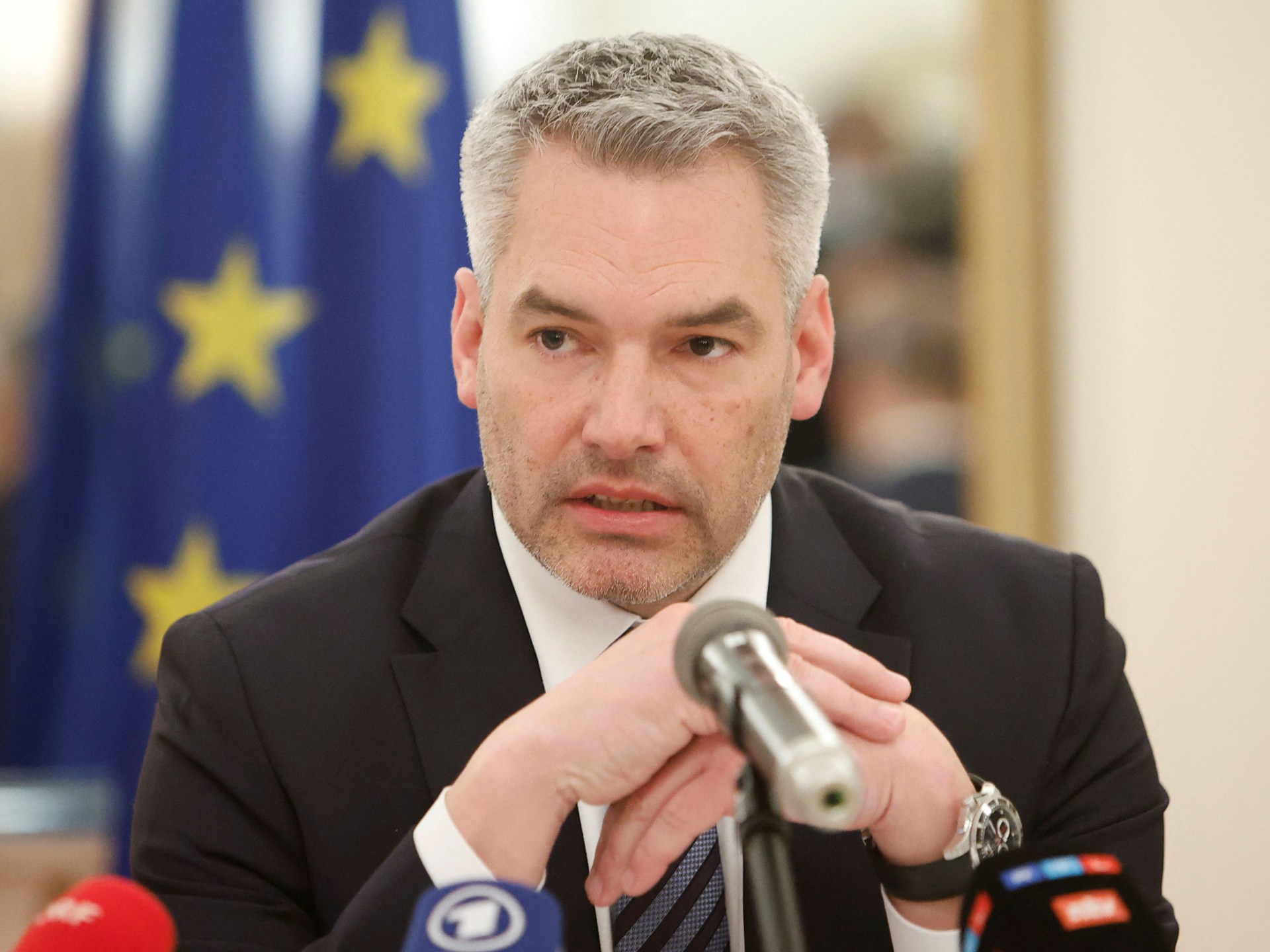Oregon
No. 8 Oregon at No. 7 Washington is a juicy Week 7 matchup with high-flying offenses, Heisman hype

Go west, college football fans, if you’re looking for the best games in Week 7. Pac-12 teams are involved in three of the four Top 25 matchups Saturday.
No. 8 Oregon plays the first of three straight games against ranked opponents when it visits No. 7 Washington. The Ducks and Huskies meet for the 103rd time, but first when both are in the top 10. It’s the Pac-12’s game of the year so far.
No. 18 UCLA at No. 15 Oregon State is a nice Pac-12 undercard. The Bruins’ defense has held four straight opponents under 260 yards. DJ Uiagalelei leads a balanced Beavers offense piling up 450 yards per game.
No. 10 Southern California, coming off its close call against Arizona, travels to South Bend to face a 21st-ranked Notre Dame team looking to rebound from a lackluster loss to Louisville.
No. 25 Miami at No. 12 North Carolina is the only other game pitting Top 25 teams. The Hurricanes will try to bounce back from their a play-calling gaffe that cost them last week’s game against Georgia Tech. They will face a red-hot Drake Maye, who has thrown for over 400 yards in two of his last three games.
BEST GAME
No. 8 Oregon (5-0, 2-0 Pac-12) at No. 7 Washington (5-0, 2-0), Saturday, 3:30 p.m. ET (ABC)
Oregon quarterback Bo Nix, right, looks for a receiver against Stanford during the first half of an NCAA college football game, Saturday, Sept. 30, 2023, in Stanford, Calif. Credit: AP/Godofredo A. Vásquez
Pity the defenses: These are the top two offenses in the country, and they combine to average more than 1,100 yards and 97 points per game. The game has potential College Football Playoff implications. Washington’s 37-34 win last year was the Huskies’ first in Eugene since 2016.
HEISMAN WATCH
Washington’s Michael Penix Jr. and Oregon’s Bo Nix are the main attractions in Seattle.
Penix is the national passing leader, and it’s not close. He’s throwing for nearly 400 yards per game. Nix is completing 80.4% of his passes and on track to break the FBS season record of 77.4% by Alabama’s Mac Jones in 2020.
UCLA linebacker Oluwafemi Oladejo, center, is surrounded by teammates after intercepting a pass from Washington State quarterback Cameron Ward during the second half of an NCAA college football game, Saturday, Oct. 7, 2023, in Pasadena, Calif. Credit: AP/Ryan Sun

The two have combined for 31 touchdowns and just three interceptions this season. As far as the actual Heisman Trophy race, Penix is ahead of 2022 winner Caleb Williams of Southern California according to FanDuel Sportsbook.
NUMBERS TO KNOW
6 — Points needed by Texas State in its seventh game, against Louisiana-Monroe, to match its 2022 total of 253 in 12 games.
10 — Air Force’s win streak entering its Mountain West showdown with Wyoming, the Falcons’ longest since 1998-99.
13-5 — Mike Elko’s record at Duke, the best 18-game start for a coach in program history.
17 — Second-half points allowed by Michigan and Penn State (each).
21 — Wisconsin’s third-down conversions on 35 attempts in its last two games, a 60% success rate that’s best among Power Five teams in conference play.
UNDER THE RADAR
Tulane (4-1, 1-0 AAC) at Memphis (4-1, 1-0), Saturday, 7 p.m. ET (ESPN)
It’s a key game early in the AAC schedule, and the winner will stay in first place and check a box in the competition for the Group of Five slot in the New Year’s Six bowls.
The Green Wave are stout defensively. They’re giving up AAC lows of 17.4 points and 84 yards rushing per game and have league-best averages of 3.4 sacks and 1.4 interceptions.
Memphis is scoring a league-best 36.6 points per game, Seth Hennigan is completing just under 70% of his passes for 275.2 yards per game, and Roc Taylor is coming off two straight 100-yard receiving games.
HOT SEAT
Louisiana-Monroe’s Terry Bowden is 10-19 in three seasons and coming off a 55-7 home loss to South Alabama. Now the Warhawks (2-3, 0-2 Sun Belt) face back-to-back road games against Texas State and Georgia Southern.
ULM is averaging just 18.2 points and 325 yards per game, worst in the conference, and it ranks near the bottom in the major defensive categories.
Bowden is under contract through 2024 and would be owed just under $200,000 if ULM fired him after the season.

Oregon
Riley Williams goes in-depth on Oregon State commitment: Maalik Murphy ‘sealed the deal for me’

Riley Williams is coming home.
On Saturday during a visit to campus, the Miami Hurricanes tight end and former Central Catholic star announced his transfer portal commitment to the Oregon State Beavers.
“It was really that thought of playing back home,” he said. “Believe it or not, I was born and raised in Portland Oregon and I’d never stepped foot in Corvallis. It was my first time being down there.”
“I had connections with the coaches — whether they were Central Catholic alumni or just through local ties. And the opportunity was huge. I’d go there and be able to showcase my talent.”
In two seasons at Miami, Williams played in nearly every game and accumulated 15 receptions for 187 yards and one touchdown.
The 6-foot-6, 240-pound tight end will have two years of eligibility remaining.
After entering his name into the portal in late December, Williams heard from dozens of schools, but was most heavily recruited by Cal, Oregon State and UCLA.
The Beavers earned the first visit this weekend, in part, due to a pair of peer recruiters.
“Darrius (Clemons) was definitely recruiting me,” Williams said. “He was on me heavy, for sure. He was on me the most behind the transfer quarterback, Maalik Murphy.”
Williams’ Miami team played against Murphy while he was at Duke this fall and the newest Beaver was impressed by the quarterback’s ability to make plays with his arm.
“To be honest, when I saw him (in Corvallis) I didn’t realize how tall he is. He’s huge,” Williams said. “He’s got the ability to throw the ball. He’s a 3,000-yard passer. I’m excited to be on that team and catch those passes and block for him and do whatever I’m supposed to do.”
Would Williams have still chosen Oregon State without a star transfer quarterback coming in?
“I don’t know,” he said, thinking. “Honestly, not sure. But once he signed and hit me up, that sealed the deal for me.”
As a class of 2023 high school prospect, Williams was a star at Central Catholic before transferring to national powerhouse IMG Academy (Florida) for his senior season.
A heralded bluechip recruit, Williams was selected as an Under Armour All-American and committed to Miami over more than 20 scholarship offers, highlighted by Alabama, Florida State, LSU, Michigan, Ohio State, Oregon, Tennessee, Texas and others.
At Miami, Williams earned immediate playing time, but was not utilized as a pass-catcher as much as his high school profile projected.
Offensive fit, therefore, was a massive piece of the puzzle when looking at his options as a transfer.
And Oregon State offensive coordinator Ryan Gunderson’s offense made for an excellent fit.
“I have two years of experience under my belt. I’ve played almost every game of my college career so far,” Williams said. “Through that, you see that you have to see a school that is going to utilize you and give you the opportunity to show what you can do to help you win. You have an offensive coordinator, coach Ryan Gunderson, he’s a previous (offensive coordinator) at UCLA when they had Greg Dulcich. It’s going to be an offense where the tight ends are utilized.”
Perhaps the final key piece in Oregon’s favor? The programs recent pipeline of in-state tight ends becoming NFL’ers – Teagan Quitoriano (Sprague) and Luke Musgrave (Bend).
Williams hopes to arrive in Corvallis sometime next week.
He’s ready to work – and to showcase his ability closer to home.
Nemec’s analysis
I’ve covered Riley Williams extensively since his freshman season.
Coming out of high school, I had a high four-star grade on him – with an NFL ceiling.
I still feel that way – and continue to love him as both an on-field asset and a culture fit.
Simply put, he’s a good athlete and human being.
Mario Cristobal’s offenses – both at Oregon and Miami – have somewhat limited the passing game, especially pass-catching tight ends.
When he committed, I had some concern about how he’d be used, and I think the Miami offense wasn’t the best fit for his skillset.
i expect Williams to immediately become a key focal point in the Oregon State offense and for his numbers to quickly reflect that of his recruiting stock coming out of high school.
Oregon
Oregon summer camp for children of military families seeks state funding help

In this undated photo provided by Oregon Summer Star, campers fold a flag in honor of those who serve in the military. A new bill would support the camp, which supports children from military families. The camp has recently faced financial struggles.
Courtesy of Oregon Summer Star
Active duty federal military installments are for more than just national defense. Forts, bases and outposts offer grocery stores, bowling alleys, churches and other centers of civic life that provide community for families and support children whose parents serve.
Oregon is one of a handful of states that doesn’t have any active duty bases. Since 2006, Oregon Summer Star, the state’s only overnight summer camp for children of military families, has sought to fill that gap by bringing these kids together and helping them through the challenges of being apart from an enlisted parent. But recently, funding the camp has gotten harder.
“The last five years, we have been retreating to a place where we can barely pull it off,” said Ethan Erickson, the founder of Tsuga Community Commission, a nonprofit that sponsors and administers the camp. “And we’re at a point now where if we don’t have $50,000 by a certain date, we’re not going to be able to do it.”
Sen. Suzanne Weber, R-Tillamook, is proposing a bill during this upcoming legislative session that would allocate more than $100,000 for the camp, which supports families of veterans, the Oregon Army National Guard, and children with other military connections.
The camp has “been operating purely on donations for many years now and it has come to our attention that this much needed service for military affected youth could come to an end very soon without help,” Katy Cvitanovich, Weber’s chief of staff, said in an email. “With assistance they could continue providing the vital support and sense of community Oregon’s military impacted youth deserve.”
Lawmakers review hundreds of spending requests like this during any legislative session. It will be months before they have a firm sense for the state’s financial picture and the costs of the largest issues they plan to address during the upcoming session, including housing and transportation.
Ultimately, this will determine how much is left to spend on other projects, so it’s unclear whether the bill stands a chance of passing. Cvitanovich said in a text message that lawmakers have yet to determine how they would fund it.

In this undated photo provided by Oregon Summer Star, campers paddle canoes on a summer day. The camp used to host about 200 children from military families each year, but now hosts about 50. The camp’s goal is to provide community to children with military ties.
Courtesy of Oregon Summer Star
Oregon Summer Star used to serve nearly 200 kids annually, at locations that included Central Oregon, Southern Oregon, the Willamette Valley, and most recently Camp Cedar Ridge in northern Willamette Valley off Highway 26 in Vernonia.
Campers pay $350 to attend, but the new bill would cover the cost for military families to participate, Erickson said. Other camp costs, including staffing and extracurriculars, would still be funded by donations. There are more than 2,000 children in Oregon with active-duty parents, and more than 7,200 with parents in the National Guard or military reserve, according to Dec. 31, 2023, data from the Department of Defense.
In recent summers, the camp hosted about 50 children annually. It costs about $50,000 to run the camp annually, and food costs, property taxes and associated costs of facilities have increased, making it harder to fund the maintenance staff, cooks, nurses and others who keep it running.
“We literally can’t afford the cost of feeding and giving somebody a bed for the night at the camp itself,” said Erickson, who served as a lieutenant with the Oregon Army National Guard.
The week-long camp offers children the chance to play games such as capture the flag and recreational activities like swimming, volleyball and basketball. Throughout the week, campers take part in activities designed to teach them about plants and stream biology and more. Like any summer camp, attendees sing songs and perform cabin skits.
But the camp also includes activities aimed at relating to experiences of families in the military, including raising and lowering the flag and singing a version of “Taps” at the day’s end. By Thursday of camp weeks, when the campers are comfortable and opening up, the kids get an up close look at their parents’ lives in the military: The Oregon Army National Guard brings out vehicles like Humvees and, once, a Black Hawk helicopter. Kids try on camouflage uniforms and helmets and use a radio.
“It’s a way to close that gap a little bit,” Erickson said.
The camp is an important way to help kids in an emotionally turbulent moment in their lives, Erickson said. There’s mental health help and sharing circles with social workers where kids get to talk about experiences that only other campers understand, everything from missed birthdays to picking up an absent parent’s chores to the challenges of growing up without a supportive adult nearby.
“Kids serve, too,” Erickson said. “They didn’t make the choice to get in uniform, but they have to serve, too. They have to do their part within the family.”

In this undated photo provided by Oregon Summer Star, campers gather around a campfire. During the annual week-long camp, attendees sing songs, perform skits, play volleyball and learn more about their family’s lives in the military. Supporters of the camp say it helps children feel less alone during the isolating experience of being apart from an enlisted parent.
Courtesy of Oregon Summer St
Annette Caroline, a 15-year-old student, moved to Portland from Washington D.C. in 2019. She said the camp was one of the first ways she made friends after leaving an area with a significantly higher population of families with armed services members. Her father was a lieutenant colonel in the U.S. Air Force. At camp, she said she’s made friends who can relate to her experience, prompting her to return every year since. Now she’s planning to be a counselor.
“Sometimes I’ll mention something to my friends who don’t have any military affiliation, and they’ll just kind of look at me sideways and be like, what?” she said. “But when I get to talk to these people from camp we all get to have this good sense of connection, and we get to relate to each other in a way that’s really difficult to find in other places in Oregon.
If the camp were canceled, she said, the loss would be a big deal to people like her.
“I think it would break a lot of hearts of the campers there and the counselors themselves who are always looking forward to the next week of camp to not be able to have that anymore,” she said.
Should the bill pass, Erickson said it would be enough to buoy the camp for at least two years, giving them time to figure out a long-term funding plan.
Oregon
3 Key Numbers from Illinois Basketball’s Win Over Oregon

No. 22 Illinois (10-3, 2-1 Big Ten) traveled to Eugene and put an absolute thrashing on No. 9 Oregon (12-2, 1-2 Big Ten), taking down the home team 109-77 – good for the widest margin of victory by a visiting team against a top-10 opponent ever.
Scorching-hot shooting (57.5 percent from the field) led the Illini to their massive triple-digit night as the Ducks’ usually solid defense (68.7 points allowed per game) offered little resistance against an endless rain of threes and layups.
On defense, Illinois held the Ducks to 30-for-69 shooting from the field (43.5 percent), but something less than the usual effort and focus was required (and may have been applied) on an evening when the offense was firing on all cylinders.
Here are a few key digits that offer further insight into how the Illini were able to pull off the historic win:
The Illini needed this. A 15-for-33 showing from three-point range (45.5 percent) against Chicago State was encouraging, but the Cougars are a winless mid-major. Shooting 16-for-29 from three (55.2 percent) on the road against a top-10 team? That’s how a team gets its confidence back. Also worth noting: After a 5-for-25 stretch from beyond the arc, forward Ben Humrichous went 4-for-7 against the Ducks en route to a season-high 18 points. And no, there’s no expectation that either Humrichous or Illinois as a whole can maintain a three-point shooting mark above 50 percent. But if the Illini can hover closer to 40 percent than 30 percent, they will be well-positioned to make a competitive run for the Big Ten title.
From the corner 🚀 @IlliniMBB pic.twitter.com/qLXL3aDZD5
— FOX College Hoops (@CBBonFOX) January 3, 2025
Although the shooting has been inconsistent on a game-to-game basis, Illinois has been rock-solid on the boards all year – and that didn’t change Thursday. The Illini outrebounded the Ducks 43-31, now having won the battle of the boards in every game this season but the home loss to No. 1 Tennessee. Against Oregon, Illinois got a big night on the glass from Tre White – who posted the quietest 20 points and 11 rebounds you’ll ever encounter – while Tomislav Ivisic added eight and Kasparas Jakucionis six. The Illini need to continue their rebounding domination against the bigger, more athletic competition of the Big Ten. If the Ducks game was any indication, that shouldn’t be a problem.
Through 12 games, Illini coach Brad Underwood and his staff had been keeping the rotation pretty tight, with only Will Riley, Dra Gibbs-Lawhorn and Morez Johnson Jr. getting regular, significant minutes off the bench. But that changed on Thursday, and after the performance of Jake Davis, the change could become permanent. Davis – uniform No. 15 – is a Mercer transfer who, after entering the game with 14 points on the season, nearly doubled it with 12 points on 5-for-6 shooting from the field against Oregon. None of that was garbage-time production, by the way. All of Davis’ scoring came in the first half, when the margin was still within single digits and the outcome was still anyone’s guess.
3 Big Takeaways From Illinois Basketball’s Win Over Oregon
Illinois Basketball Rains Threes on Oregon in Record-Breaking Blowout
Who Is Neel Ganta, Illinois Basketball’s New Director of Player Personnel?
-

 Health1 week ago
Health1 week agoNew Year life lessons from country star: 'Never forget where you came from'
-
/cdn.vox-cdn.com/uploads/chorus_asset/file/24982514/Quest_3_dock.jpg)
/cdn.vox-cdn.com/uploads/chorus_asset/file/24982514/Quest_3_dock.jpg) Technology1 week ago
Technology1 week agoMeta’s ‘software update issue’ has been breaking Quest headsets for weeks
-

 Business4 days ago
Business4 days agoThese are the top 7 issues facing the struggling restaurant industry in 2025
-

 Politics1 week ago
Politics1 week ago'Politics is bad for business.' Why Disney's Bob Iger is trying to avoid hot buttons
-

 Culture4 days ago
Culture4 days agoThe 25 worst losses in college football history, including Baylor’s 2024 entry at Colorado
-

 Sports3 days ago
Sports3 days agoThe top out-of-contract players available as free transfers: Kimmich, De Bruyne, Van Dijk…
-

 Politics2 days ago
Politics2 days agoNew Orleans attacker had 'remote detonator' for explosives in French Quarter, Biden says
-

 Politics2 days ago
Politics2 days agoCarter's judicial picks reshaped the federal bench across the country

















